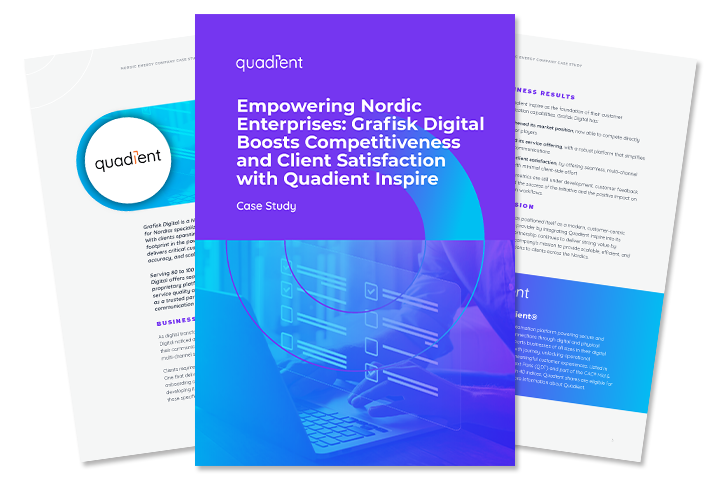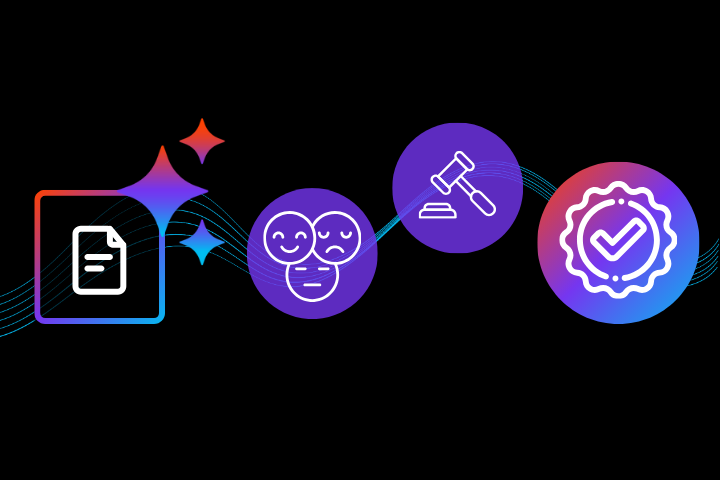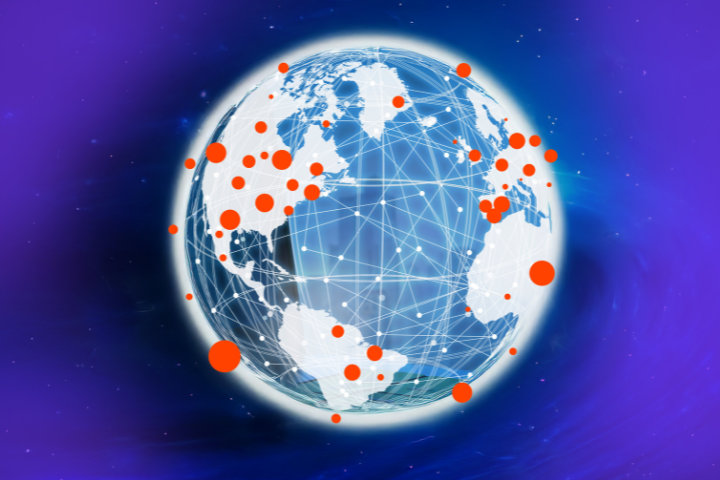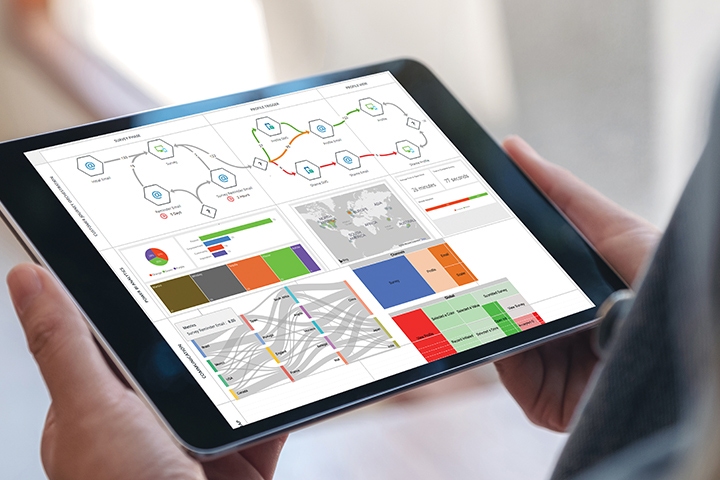
The first book Nicole Newton and I wrote, How Hard Is It to Be Your Customer? Using Journey Mapping to Drive Customer-Focused Change, introduced a different way of looking at customer journey mapping (CJM) and showed the importance of change management for the success of any journey mapping initiative.
Gone are the days when organizations could throw teams together in a conference room, stick some Post-its on the wall, scarf down some M&Ms, and leave the room a few hours later, proclaiming that they understood the customer journey.
Effective customer journey mapping requires capturing and incorporating the literal voice of the customer to drive the organization to streamline the customer experience. If you don’t involve real-life customers, you’re not accurately mapping the customer’s journey.
That’s a story that must be told from the customer’s perspective.
The mapping process we laid out in the book, and the strategies behind it, still hold up and will serve you just as well today. But there is something that’s changed in the customer experience (CX) industry in the four years since the book came out that has led us to rethink one aspect of journey mapping.
No, I’m not talking about COVID. (Well, at least not directly.)
We conducted some of our workshops virtually even before 2020 – albeit a smaller percentage – and none of the other pandemic-related accommodations to the way we work warranted updating the book.
The rise and evolution of customer journey mapping software, however, does warrant such action. That rise was fueled in part by the part by the pandemic because COVID spurred explosive – and urgent – growth across the spectrum of tech solutions and digital technologies.
But it’s the capabilities of journey mapping software that have made it a key tool in mapping and sharing your customer journeys.
If you read the first edition of our book, you may have sensed a certain disdain for CJM software. And you wouldn’t have been wrong. The products at that time were limited in functionality, primarily using boxes in swim lanes to represent what customers did.
Today’s programs go far beyond that and merit recognition for it.
I first began to see the light while researching my upcoming book, Do B2B Better, Drive Growth through a Game-Changing Customer Experience, and later, when partnering with the CXPA to interview hundreds of CX leaders to see what separated Change Makers (those leaders who can prove their CX efforts are driving a healthier business) from Hopefuls (those who may be doing good work but can’t show they’re impacting the business).
One key difference I found between these groups was their use of technology. That encompasses multiple categories, but it was clear that Change Makers were far more likely to use CJM software than Hopefuls were.
This piqued my curiosity and led my team and me to delve deeper and investigate the current CJM software marketplace. We wanted to see how it had changed since I’d taken my first (somewhat dismissive) look at what was available and why Change Makers were so successful in using it today.
In the course of our research, we identified three categories of CJM software:
- Whiteboarding applications. Programs such as Stormboard, Lucidchart, and MURAL, which are typically used in workshops, allow participants to show the steps in a journey effortlessly – but they’re certainly not limited to that. They have a broad variety of use cases far beyond CX, and they are extremely easy to use.
- Mapping visualization software. These applications add more CJM-specific features, defining the steps of the journey and incorporating visualization. Some players in this space include UXPressia, Custellence, and Smaply. While these products do provide more rigor around journey mapping than whiteboarding applications, they still don’t link to external systems. They can’t be used as broadly as whiteboarding applications, but they are better at demonstrating the journey and enabling users to collaborate virtually on journey design.
- Dedicated CJM platforms. Here’s where the specialization really ramps up. These platforms make up for what they lack in broad use cases with targeted tools to better measure — and even manage — journeys. These offerings also enable users to measure journey success. They link to external data to provide comprehensive reporting on the state of the journey and include design tools to build improved outcomes. Examples include Quadient’s Inspire Journey, Touchpoint Dashboard, and SuiteCX.
Our desire to share what we learned led us to release as second edition of our book, with an all-new chapter on CJM software. We walk through the critical features and use cases of CJM software, and we explain how it’s come to be a Change Maker’s best friend…and can be yours, too.
With their expanded functionality and capabilities, today’s CJM platforms can help you:
- Document the steps of the journey
- Create personas and a map atlas
- Visualize the journey
- Collaborate on documenting and redesigning the journey
- Design the future-state journey
- Integrate the journey redesign into existing projects
In the second edition of the book, we also introduce the concept of a “living journey maps,” which we learned about during our 200+ hours of interviews with leading CX programs.
A living journey map integrates the voice of the business into the visualization of the journey. The graphics below – created in Quadient’s Inspire Platform – show how. In the first graphic, you can see the original journey, where 40% of participants call the contact center at an average cost of $24 per call. The second image shows an improved journey, with only 20% calling the contact center, at less than one-third the cost, an average of $7 per call.
But both images are from the same map, just captured at different moments. The figures are live links, populated with integrated business data that changes over time, making it easier to quantify the financial impact of your initiatives.
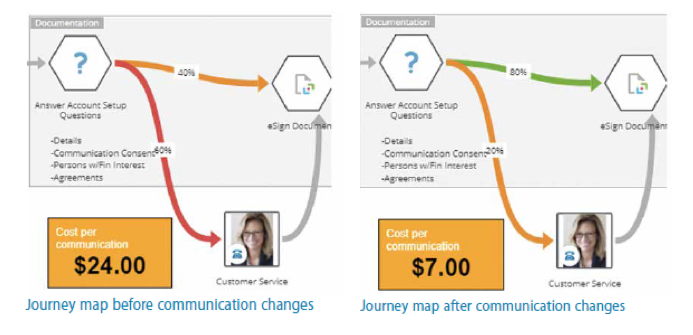
The beauty of living journey maps may be obvious to CX leaders…but it’s even better for Agile Teams. Imagine your Agile Team coming in each morning and looking at the updated journey map, now charged to show the impact of their latest release!
Our new chapter also explores how to integrate CJM software into your existing processes, and ends with an overview of journey analytics and orchestration. We also feature an interview with Adam Firbank, who at the time of the interview lead the journey mapping capability at British Gas. He shared with us how he built an amazing program, and we’re excited to share his comments with you.
How Hard Is It to Be Your Customer? Using Journey Mapping to Drive Customer-Focused Change remains the authoritative guide on customer journey mapping. But this new second edition fills a gap in the literature, and now shows you how to integrate technology into world-class journey mapping programs, too.





